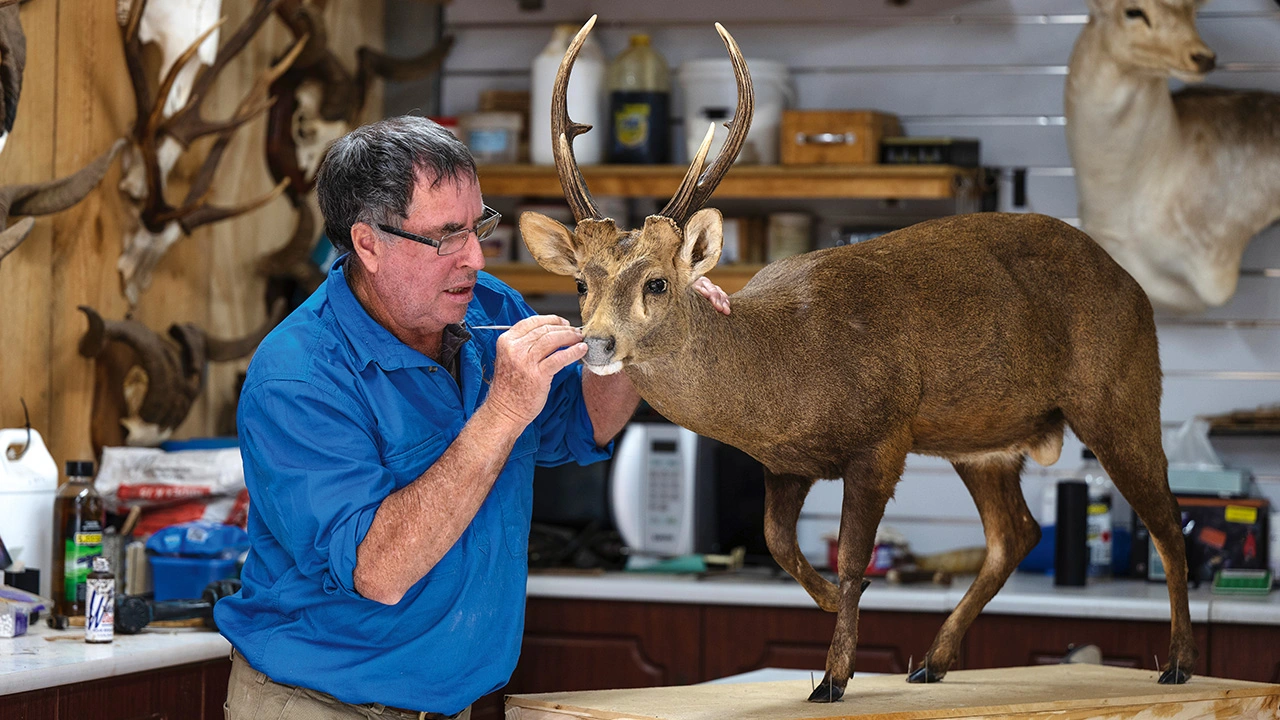A Quorn-based truckie trained in taxidermy has a tough job keeping up with demand.
Story Gretel Sneath Photos Italo Vardaro
Merv Rabig encounters his fair share of roadkill in his day job delivering fuel across the Flinders Ranges, SA. But as tempting as it might be for the skilled taxidermist to salvage what he can of their carcasses, he’d sooner leave them for the wedge-tailed eagles and other scavengers. “There’s a lot of red tape involved when it comes to native wildlife, and I’ve got far too much work as it is,” he says.
The backyard shed of the 61-year-old’s Quorn property contains 5 chest freezers filled with creatures great and small, awaiting a rebirth of sorts. “As soon as they come in, I tan them as quickly as I can. They’re quite a small package once you shave them right down to the 2 main layers of skin, and then you just roll them back up and they’ll keep indefinitely in the freezer,” he says. “When I’m ready to mount one, it only takes me an hour or so to thaw it out and get stuck into putting it together.”
The taxidermy process involves shaping an artificial body form out of polyurethane foam, adding a set of glass eyes and usually prosthetic jaws before mounting the animal in a lifelike position and affixing the tanned hide with staples and glue. It’s intricate work, which Merv has perfected over more than 2 decades, and it commands an intimate knowledge of the subject. “One thing I have noticed as a wildlife artist is that you need to be able to see the job in your head before you start it – if you can’t see it, it will never work to your satisfaction,” he says. “People ask for a particular position – it might be a deer grooming itself or with its head turned to the left or right, and I know that I can do it.”
This story excerpt is from Issue #152
Outback Magazine: Dec/Jan 2024










